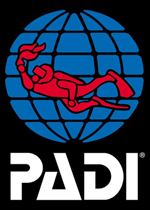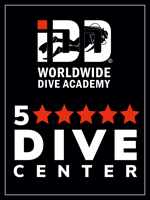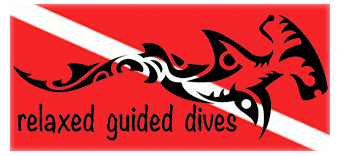Discover the beauty of the underwater world of Curaçao… encounter all kind of creatures…
Awareness.
Awareness is something we teach all our divers. During your Discover Scuba Dive, your open water dive course or your guided dives you might encounter a turtle or two. Look at this movie and see our divers enjoy their encounter with these amazing animals. Awareness in this case means there are a couple of facts you should know when you are diving in a spot with turtles
What to do/not to do?
Don’t chase them! When you stay calm and relaxed, and even make eye contact with the turtle he will let you come pretty close so you can observe or make a great photo.
Turtles need to go to the surface to breathe, so when you see a turtle trying to go up leave him alone. He will breathe a couple of times and come back down.
Don’t touch them! The bacterias we carry with us on our skin might give the turtle a disease. Besides this you only scare them away.
Don’t feed them, let them find their own food. If they get used to being fed by divers/snorkelers they will stop trying to find their own food. When they get really hungry they might mistake your finger for a snack.
Did you know PADI offers a Project Aware specialty concerning turtles? If you love turtles you might want to look into this specialty, might be just the thing for you.
Here on Curaçao we usually see the Green turtle and the Hawksbill turtle. The Green turtle we often find shallower, looking for beds of seagrass. The Hawksbill we see more on the reef itself, scraping algae of the corals. From time to time turtles also nest on Curaçao. So if you’re very, very, very lucky you might see some tiny turtles hatching from their eggs and finding their way to the ocean.
We are still waiting for that precious moment, would love to see this ourselves. Until then we just enjoying observing turtles and teaching you about them during our dives.
Different view on a Fullface mask (IDM) from Oceanreef, seen through the eyes of a frogfish :-))
What is going on over there this frogfish must have been thinking! I’m used to see divers looking at me with a mask on and a regulator in his/her mouth. But these 2 divers have their face covered completely and nothing in their mouth. How do they breath?
Well, Rob and his Advanced Open water student where doing the Fullface mask or Integrated Dive Mask dive. What a different feeling it is to be able to dive whilst breathing through your mouth and nose, whatever you prefer. No water coming in the mask (no matter how hard you try, it’s really difficult to get water in), no fogging of the mask. Even hanging upside down it stays comfortable.
Another plus is that you have a wider view with the Fullface mask.
After doing a couple of exercises necessary to use the IDM correctly Rob and his student had a great dive in which they observed the cute yellow frogfish walking, swam with turtles and looked at a squid for quite a long time. Again something different, squids usually are quite shy and stay a bit further away.
We are very enthusiastic about diving with IDM, it gives us different possibilities. For certain when we set it up with a communication device later this year. Think about the ease it will give when you try to communicate during a wreck dive for instance. Or just to share your enthusiasm about creatures you see underwater.
Do you want to have a different experience yourself and try the full face mask or IDM? Contact us so we can schedule a Fullface introduction dive or even the Fullface specialty course. Already a certified Fullface mask diver? Let us take you on a guided dive then!
Beautiful encounters during a Discover Scuba dive aka Refresh dive. A couple of weeks ago I got a phone call from the lady in this movie. She explained she had not been diving in a long time and her boyfriend never finished his Open Water Course. After the swimming pool sessions he lost his interested. Well, this dive brought him his motivation back!
Look at all the beautiful creatures they encountered during their dives with Rob, on 2 different dive sites.
Do you also want to have the experience of a life time and the possibility to see amazing under water life? Call us or send an e-mail and schedule your own DSD, Open Water Course or guided dive when you’re already a certified diver.
Director’s Bay en Tugboat zijn 2 mooie duiklocaties aan de andere kant van het eiland, vanaf ons duikcentrum gezien. Director’s Bay dankt zijn naam aan het feit dat de directeuren van de voormalige Shell raffinaderij regelmatig op dit strandje te vinden waren, evenals de koninklijke familie wanneer zijn op het eiland verbleven. Om zeker te zijn dat er niets kon gebeuren met deze mensen is er in het verleden zelfs een ‘haaiennet’ geplaatst om het strand. Resten van dit net zijn nog steeds te zien, mooi begroeid met koralen en omgeven door klein onderwater leven.
Tugboat dankt zijn naam aan, u raad het al, een klein wrak dat op die locatie ligt op een diepte van 3 meter. Het wrak is leuk om even te bekijken, ook voor snorkelaars, maar vooral het rif links van het wrak is de moeite waard. Ook voor junior open water duikers is dit een geweldige duik!
Wij hebben hier de laatste 2 gidsduiken met Bert gemaakt, als afsluiting van zijn vakantie. Wat hebben we genoten van alles wat we weer gezien hebben onder water.
Fun under the sun, and underwater when diving at Curaçao! This little movie was filmed during a refresher dive. Just a small impression of what we can all encounter during our dives. Did you see the small seahorse at the end? Lovely orange, hiding on a yellowish fire coral, so much fun to discover it!
When do you need a refresher dive? Whenever you have not been diving for 12 months or longer it’s mandatory, but a lot of divers also choose to do one before they start a new course, like in this case Advanced Open Water Diver.
For a refresher dive we start in our classroom to go over the theory a bit before we go to the beach. At the beach we build up our sets again, going over the names of all parts of equipment etc. We repeat some exercises on the surface and underwater, and then it’s off for a fun tour on the reef! Basically you can see it as an extended version of a guided dive!
Bert had een droom: nog 1 keer een duikvakantie op Curaçao, net als 4 jaar geleden. Toen hadden we al een aantal leuke gidsduiken samen gemaakt. Zijn droom kwam uit, de afgelopen week heeft hij al 6 mooie duiken gemaakt samen met Petricia en telkens 1 van zijn vaste begeleiders. Kijk maar eens wat voor mooie dingen we zijn tegengekomen tijdens onze duiken. Veel schildpadden, een steenvis, mooie koralen en zelfs Neptunus werd gegroet door Bert!
Bert is Scubadiver en mag tot een diepte van 12 meter duiken onder begeleiding van een duik instructeur of divemaster. Ideaal als u niet iets verder wilt gaan als een introductie duik maar geen tijd heeft de hele open water cursus wilt volgen!
Referral dives, what are those? When you do the pool sessions of the Open Water course and the theoretical part at home already you can choose to do the last 4 open water dives during your vacation. These dives are called referral dives. During these dives you repeat the exercises you already did in the pool once, so you already know you can do it. And afterwards you make a fun tour along the reef.
This mother and son did their referral dives with us last week and today joined us once more for a guided dive. They greeted Neptune and saw a lot of turtles during this dive.
Did you already start your Open water course at home and are you thinking about finishing your course on Curaçao? Contact us for more information! Petricia always answers your e-mails as soon as she can!
Genieten met de familie van een duik op Curaçao. Eerder dit jaar had een van de mensen in dit filmpje de Open Water cursus al bij ons gevolgd. Hij vond dit zo leuk dat hij zijn zus en zwager ook graag wilde laten genieten van al het moois dat Curaçao onderwater te bieden heeft. Dus bracht hij ze bij ons om ook de Open Water cursus te doen.
Elke lesduik begint met een aantal oefeningen, aan de oppervlakte en onderwater. Daarna is er altijd tijd voor een pleziertochtje langs het rif, even lekker genieten van het rif en zijn bewoners. Kijken hoe de schildpadden elegant langs je zwemmen terwijl jezelf nog je best moet doen om je neutrale drijfvermogen te controleren.
De oplettende toeschouwer zal zien dat de dame in de film 1 keer een ’thumbs up’ geeft in plaats van het juist ‘okay’ teken. Geen probleem, het was volkomen duidelijk dat ze aan het genieten was van haar omgeving en zeker geen opstijging wilde maken :-))
Nog even langs een murene gezwommen en daarna langzaam weer terug richting strand. Morgen weer een duik?!
Longlure frogfishes are the most common seen frogfishes here on Curaçao, but even then it’s just occasionally. This specific one in the movie was filmed last Saturday during a guided dive. An extremely beautiful one, white with bright red markings and lips just like a little clown. Sadly when I went back to film some more yesterday there was no frogfish to be found anymore so this is all you get to see of it :-))
Luckily I know a spot where a tiny black one lives, so hopefully I will see a longlure frogfish later this week. Because they are so very well camouflaged it’s not easy to find them. You can imagine it’s a challenge to spot a new one, and when we do we can easily spend the remainder of our tank just looking at it and observing.
What does the reef fish identification book tell us about the longlure Frogfish?
Distinctive features: Numerous dark spots over body, some of which are occasionally ringed in white. Three spots on tail can usually be observed.
Description: Long, undivided whitish translucent filament, called a lure, just above lip. Large variety of color phases, including shades of deep red, white, pink, orange, yellow, green and tan. (see our pinterest page for all colors we already found!) Can change color, pale or darken to match background.
Abundance and distribution: Common to occasional to Florida, Caribbean, rare Bahamas (but seldom seen because the longlure frogfish has excellent ability to camouflage); also Bermuda and Brazil.
Habitat and Behavior: Inhabit reef tops. Often rest on look-a-like sponges, and usually go undetected unless they move.
Reaction to divers: Longlure frogfish apparently relies on camouflage, do not move unless molested.
Though we can never guarantee we will see any kind of creature, longlure frogfish, seahorse, turtle and so on, we will definitely be looking for beautiful things to show you during a guided dive. So contact us to schedule yours!
Last week Rob and Fred made a beautiful dive on the wreck Superior Producer, the most beautiful wreck in the Caribbean. If you want to do a dive on Superior Producer yourself it’s recommendable to do this dive as a guided dive. The wreck is not pointed out by a buoy, and entree from shore can be ‘adventurous’ if you don’t know exactly where to enter the water and what you’re doing.
Rob knows exactly where it is safest to enter and will help you get into the water safely and fast, after a which a beautiful dive on Superior Producer will be made. Of course Rob also helps you out of the water in a safely manner again.
Superior Producer is a deep dive, so only available for divers with an Advanced Open water certification and divers who have done the Deep Dive specialty.
The wreck used to be a cargo ship, which sank just after leaving the harbor because it wasn’t loaded correctly. It lies horizontally on the ocean floor and is fully covered with corals and sponges. A lot of small creatures, like shrimps and bearded fire worms, live on the outside of the wreck. Often moray eels and tarpons are spotted near and in the wreck, and occasionally a turtle.
Also eager to visit this wreck? Contact us to ask for more information or make a reservation for a guided dive. Not yet Advanced Open water certified? We can help you with that too! Providing the mandatory deep dive of the Advanced Open water course went well, without nitrogen narcosis etc. you can choose to do the wreck dive as one of the three optional dives. Navigation is a mandatory dive as well.
We hope to welcome you in our dive center any time soon, so we can do this great dive with you as well. Until then you can enjoy this movie!
Deep diving is something you only do if there’s a good reason for it, as you’ve been taught in the Advanced Open water course. For instance a wreck, or something else you really want to get a chance to see. If there’s no reason to go deep, then don’t, just stay a bit shallower where it’s more colorful and where there is so much more to enjoy.
Diving deep makes you empty your tank faster and brings more risks. Some people are sensitive for Nitrogen Narcosis for instance, and when you do not pay attention to your instruments and computer the risk of making a Deco-dive is higher as well.
Last week Rob made a deep dive into the past, together with Fred. Together they dove to Car pile, to take a look at the car wrecks you can find over there. The best wrecks are scattered over the ocean floor at a depth deeper then 30 meters, so also divers with only the Advanced Open water certification can not dive here without an instructor as a guide. For this dive you need to have done the Deep Diver specialty first, which allows you to go to 40 meters maximum, the maximum depth in sport diving. Rob and Fred both dove with their own dive computer (no sharing!) and followed the instructions of the computer so the both came back from this dive healthily and in a safe way.
Enjoy the car wrecks and little boat wreck in this movie! If afterwards you think: ‘I want to experience this for myself’, then stop by our dive center and let us inform you on the Deep Diver specialty!
The Deep Dive specialty consists of 4 dives and certifies you to dive to a max. depth of 40 meters, as told above. You will practice your dive skills, so we are sure you are a confident and safe diver.
Curaçao has a couple of great dive sites for deep diving, where there’s actually a lot of cool stuff to see!
Relaxed Guided Dives
Martha Koosje 10 Curacao
Phone: +5999-8687710
WhatsApp +5999-5221810
E-Mail: [email protected]
Web: www.relaxed-guided-dives.com
Certified


